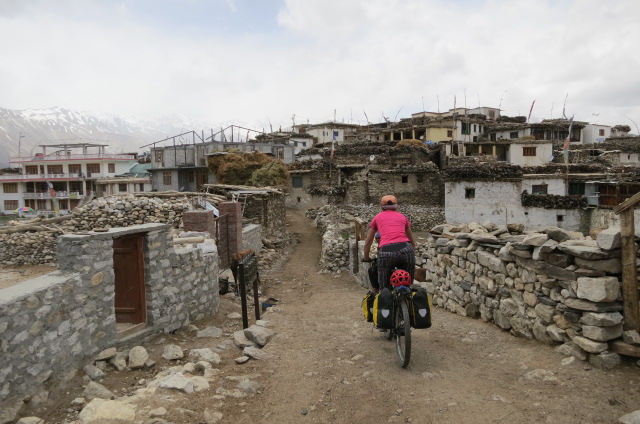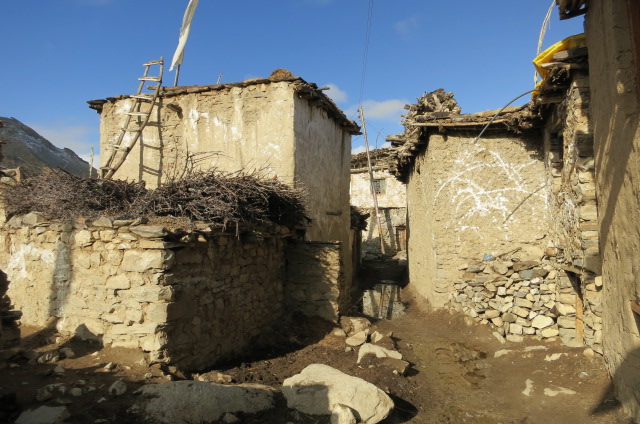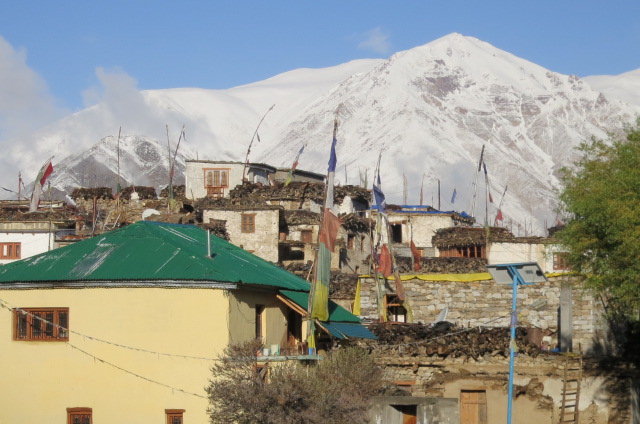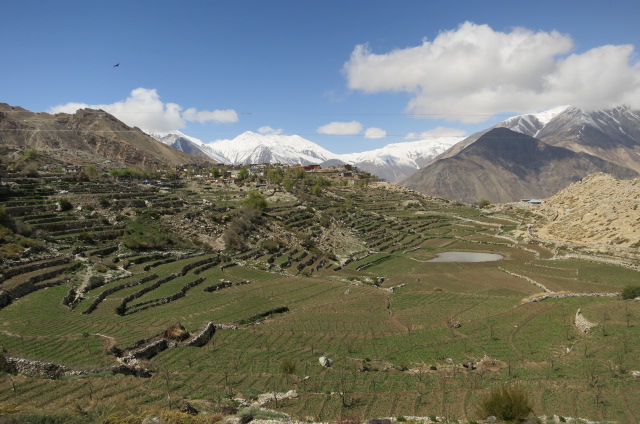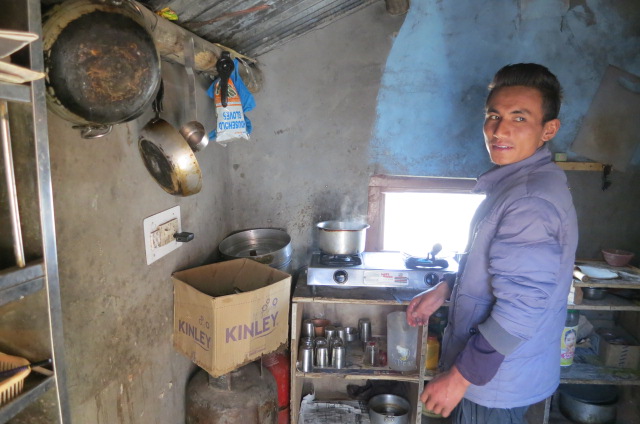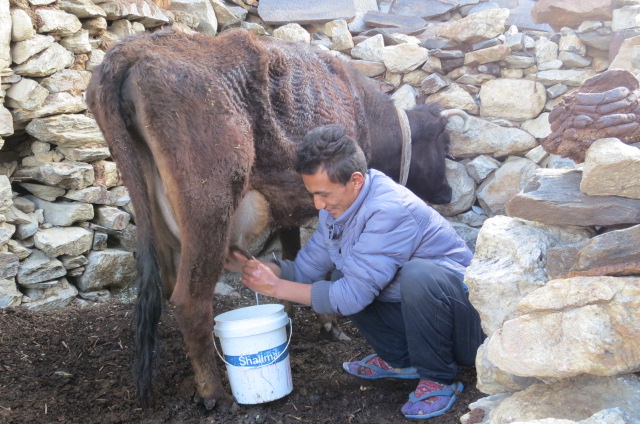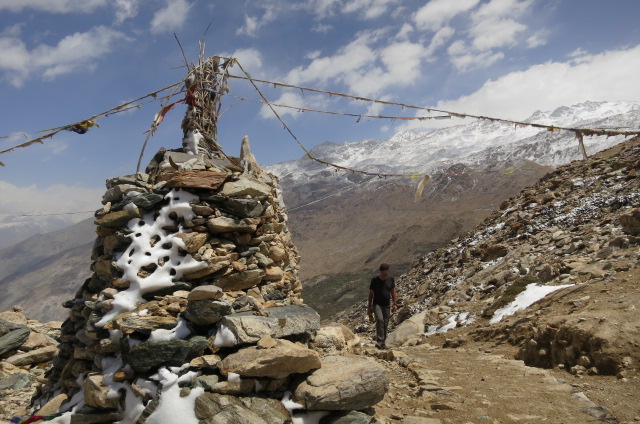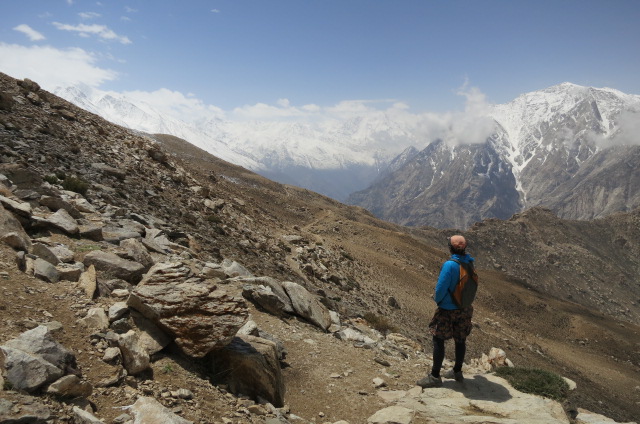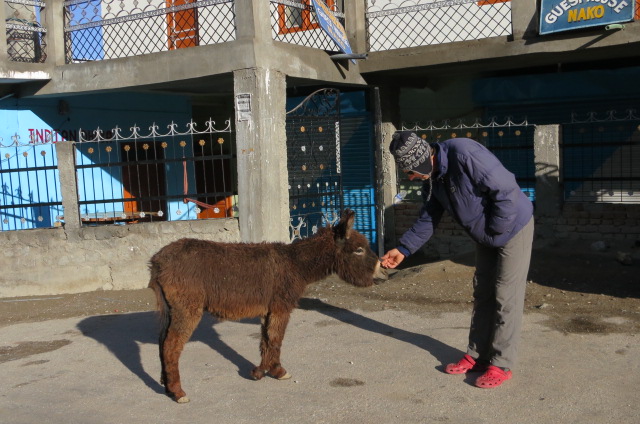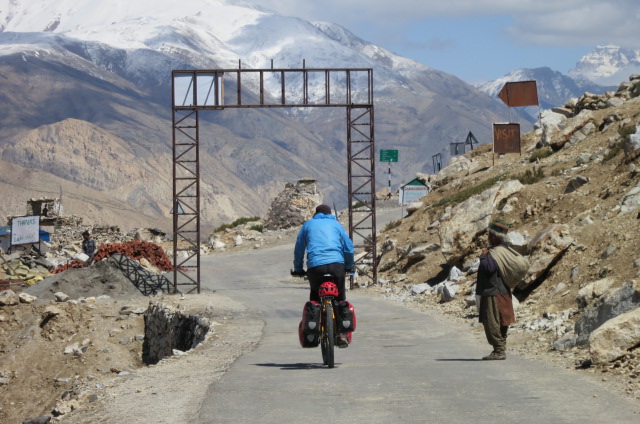We spent a couple of nights in Nako as it is such a lovely village. The old part of town is an eclectic collection of mud stone houses. Most of the houses have a small walled pen for goats and cows, a bottom story of the house is for animals or grain storage, then living is on the upper storey. Walking lanes separate the houses and any animal dung on the lanes is cleared for drying for winter fires or compost. There is no forest on the hills at this altitude so firewood is brought up from lower areas.
People have started building larger houses in concrete but the older style of construction is much warmer. We visited the one room ‘house’ of Sonam (who runs a small dhaba/tea-house in Nako) and he lived in the 4m by 5m room with his wife and mother-in-law with their small kitchen and extensive crockery collection. It was heated by a small wood stove which would keep the room very cosy in winter. Sonam took us to milk his cow, and we enjoyed the fresh milk later in our chai.
The town is surrounded by terraces planted with peas, peas and more peas. This is the major income for the village. It is too high to have the orchard trees we have seen up till now.
We awoke in Nako to snow on the ground but the sun soon melted most of it away and we enjoyed a walk above town, affording views towards the snowy peaks of nearby Tibet. That afternoon a full on blizzard set in but by the time we left town the next morning the skies were clear and the new snow on the peaks reminded us we are in the heart of the Himalaya.
